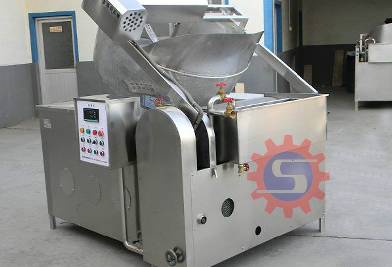Recently, Industrial electric Fryer has become a very popular way to reduce fat when frying crispy foods.
Although industrial fryers are becoming more common around the world, many people still do not know the difference between cooking food in industrial fryers and in traditional convection ovens. Next, the custom industrial electric fryer factory gathers all the information you need to understand the differences between the two types of equipment and to see which is best for you.
An air fryer is a type of kitchen device that can be placed on a countertop and inserted into almost any outlet for power. It is not a fixed device but can be moved easily as needed. These products are usually made of sturdy plastic and come with separate removable cooking POTS, trays or shelves.
Industrial fryers work by rapidly heating the air inside the equipment to a high temperature. When the air is heated, an internal fan circulates the hot air around the food, cooking it from the bottom to the top and on each side. The end result is a crunchy piece of food that has a nice texture and doesn't have to be cooked with a lot of oil, butter, or other fat. Some fryers fry without refueling at all.

Industrial Electric Fryer
What is a convection oven?
Convection ovens are also portable and can be placed on the counter and used with almost any power source in the kitchen. Some convection ovens are much larger and can be used on their own, but are usually used for commercial purposes, not for home use. These products can be made of plastic or metal, but metal ovens are more common. Although convection ovens work in a similar way to industrial fryers, they differ.
When to use an industrial fryer
In some cases, industrial fryer is the better choice. Below, we list the recommendations for using these premium devices.
Use industrial fryers to cook foods with little fat or oil. When cooking time is limited, industrial fryers can be prepared quickly for you. Industrial fryers are ideal for cooking side dishes and can hold many people at a time.
When to use a convection oven
In some cases, a convection oven may be your better choice. Check out the tips for using these devices at the right time.
Use a convection oven when you need to prepare large quantities of food. If you have more time to cook, a convection oven may be a good choice. Staple foods work well in convection ovens but may require more oil.
Convection ovens and industrial fryers have some things in common. If you first learn what they have in common, it may help you better understand the differences.
Both products can be placed on the counter and come in a variety of sizes.
Both products use hot air throughout the equipment to quickly cook food.
Both products come with removable cooking trays, baskets, or grills that make cleaning easier than traditional ovens.
The retail prices of the two products are similar.
Now that you know what convection ovens and industrial fryers have in common, you can check the differences. We summarize the list of devices that separate the two types below.
In terms of surface area, most convection ovens are smaller than industrial fryers.
More food is prepared in a convection oven than in an industrial fryer.
Industrial fryers produce crisper food than convection ovens.
Convection ovens are not as good at heating or keeping food warm as industrial fryers.
It takes about half as long to cook food in an industrial fryer as in a convection oven.
Industrial fryers require little oil to cook, while convection ovens may require a lot of oil.
Conclusion:
Finally, it may be a good idea to have both a convection oven and an industrial fryer. However, if there is no room for either device, it is recommended that you choose an industrial fryer. These products are more beneficial in the long run and can provide a healthy meal for you and your family, even if you don't have much time.
Name: Gavin
Mobile: +86 181 3273 1506
Email: oath1@bdoath.com
WhatsApp: +86 181 3273 1506
Add.: No. 79, Swan Road, Gaokai District, Baoding, Hebei, China.